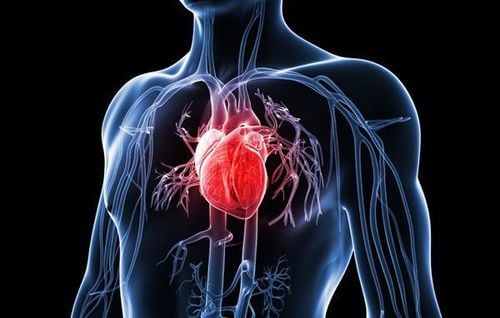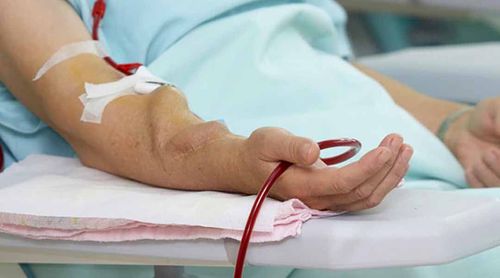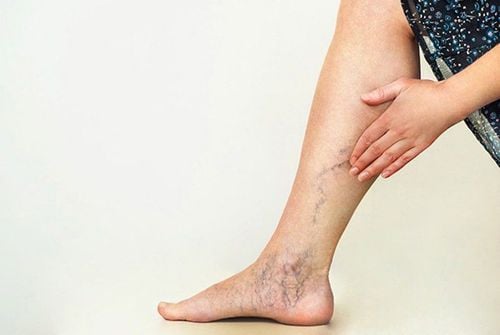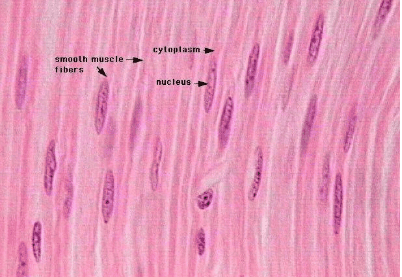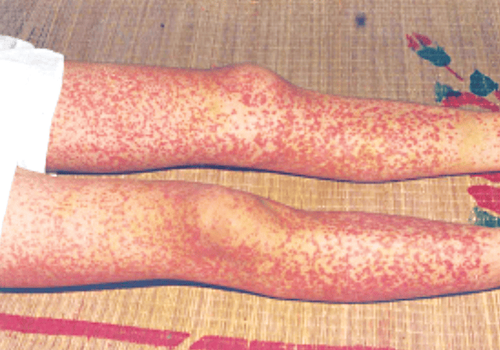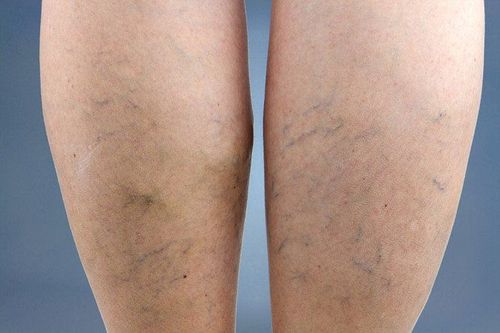This is an automatically translated article.
The article was professionally consulted with Specialist Doctor I Le Van Quang - Department of General Surgery - Vinmec Nha Trang International General HospitalAtopic dermatitis, also known as Henoch-Schonlein purpura, is a type of allergic disease of unknown etiology that is common in children and young adults with an incidence of about 2% in the 2-16 year age group. Although not a contagious disease, recognizing the signs of allergic capillary inflammation will help patients receive timely treatment, avoiding dangerous complications such as orchitis or myocarditis.
1. What is allergic conjunctivitis?

Viêm mao mạch dị ứng thường xảy ra ở mùa Xuân và Thu
As mentioned, allergic conjunctivitis is defined as an autoimmune disease with damage to the microvasculature in various organs of the body, mainly the skin, kidneys, intestines and joints. Although no specific cause has been found, the disease is common after previous respiratory infections and there are some bacteria that are also suspected to cause the disease such as staphylococcus, tuberculosis bacilli, adenovirus or fungi. .
Allergic conjunctivitis peaks in incidence in children 5 years of age and is more common in boys than in girls. The disease usually occurs in spring and autumn. Currently, there is no specific drug to treat the disease, so monitoring and treating symptoms early will help reduce and avoid dangerous complications of the disease.
2. Signs of allergic capillary inflammation
Allergic capillary dermatitis will manifest as diffuse microvascular lesions in major organs such as joints, skin, intestines, and kidneys. Specifically:Skin symptoms: Up to half of patients with allergic capillary disease have the first manifestation on the skin with hemorrhages on the extensor surfaces of the limbs, around the ankles and thighs, buttocks. , arms... Usually these purpura are non-itchy and dotted above the skin surface. In some cases, urticaria or vesicles, ecchymosis, or even a necrotic rash appear. This symptom is very easily confused with thrombocytopenia or lupus erythematosus, so it is important to distinguish it to guide the treatment of the disease.
Your color will change from purple to rust and then fade within 10 days without leaving any sequelae.
Symptoms in the joints: The majority of patients with allergic vasculitis present with pain in the joints, limited range of motion or peri-articular edema, and associated tendon pain. The purpura will usually appear on the ankles, knees, or elbow areas.
Gastrointestinal symptoms: Patients with allergic vasculitis also frequently experience abdominal pain around the navel, nausea, and vomiting. The pain usually lasts a few hours or even days and very often recurs. Patients may also have bleeding symptoms such as black stools, vomiting blood with severe abdominal pain.
Symptoms in the kidney: Damage to the kidney is the most serious complication often encountered in the acute stage when the patient has symptoms of gross or microscopic hematuria.
Manifestations of the disease in adults in some other organs and with more severe severity are as follows:
Cardiopulmonary: Met with myocardial infarction, pulmonary hemorrhage or pleural effusion; In the digestive system: Intussusception may be encountered due to hematoma in the intestinal wall or gastrointestinal bleeding, intestinal infarction; Nervous system: Crescent-shaped acute glomerulonephritis, convulsions or pathology of a single nerve fiber; Renal: Renal failure, hematuria and proteinuria are common; In addition, in men, testicular inflammation and spermatic cord torsion. It can be seen that the manifestations of allergic conjunctivitis are varied and depend on the stage of the disease. Therefore, to recognize the disease, we can remember the classic triad: palpable purpura in the extremities, abdominal pain or damage to the kidneys, and arthritis. When having these symptoms, especially skin papules, patients need to immediately go to medical facilities for timely treatment.
Please dial HOTLINE for more information or register for an appointment HERE. Download MyVinmec app to make appointments faster and to manage your bookings easily.




